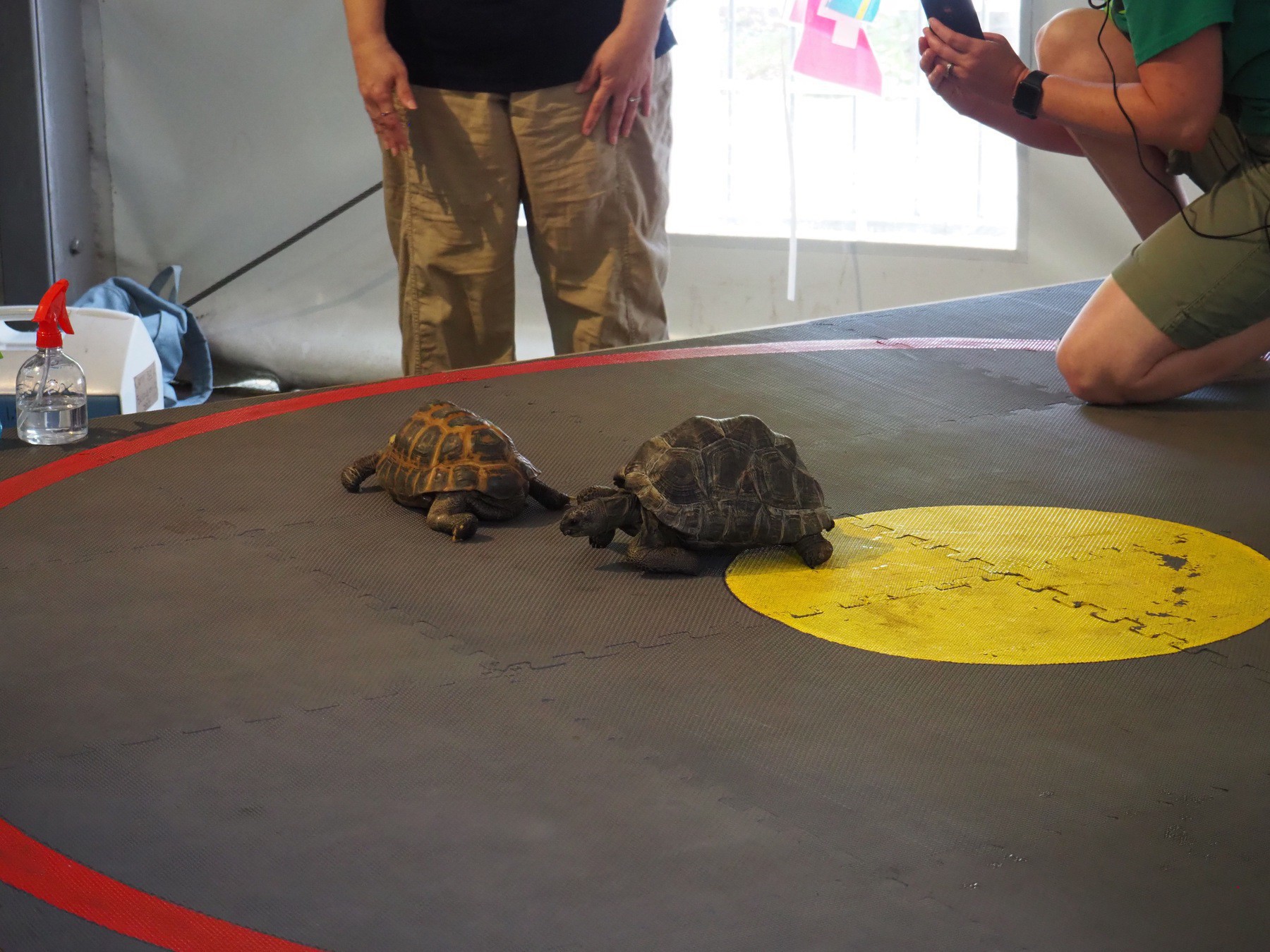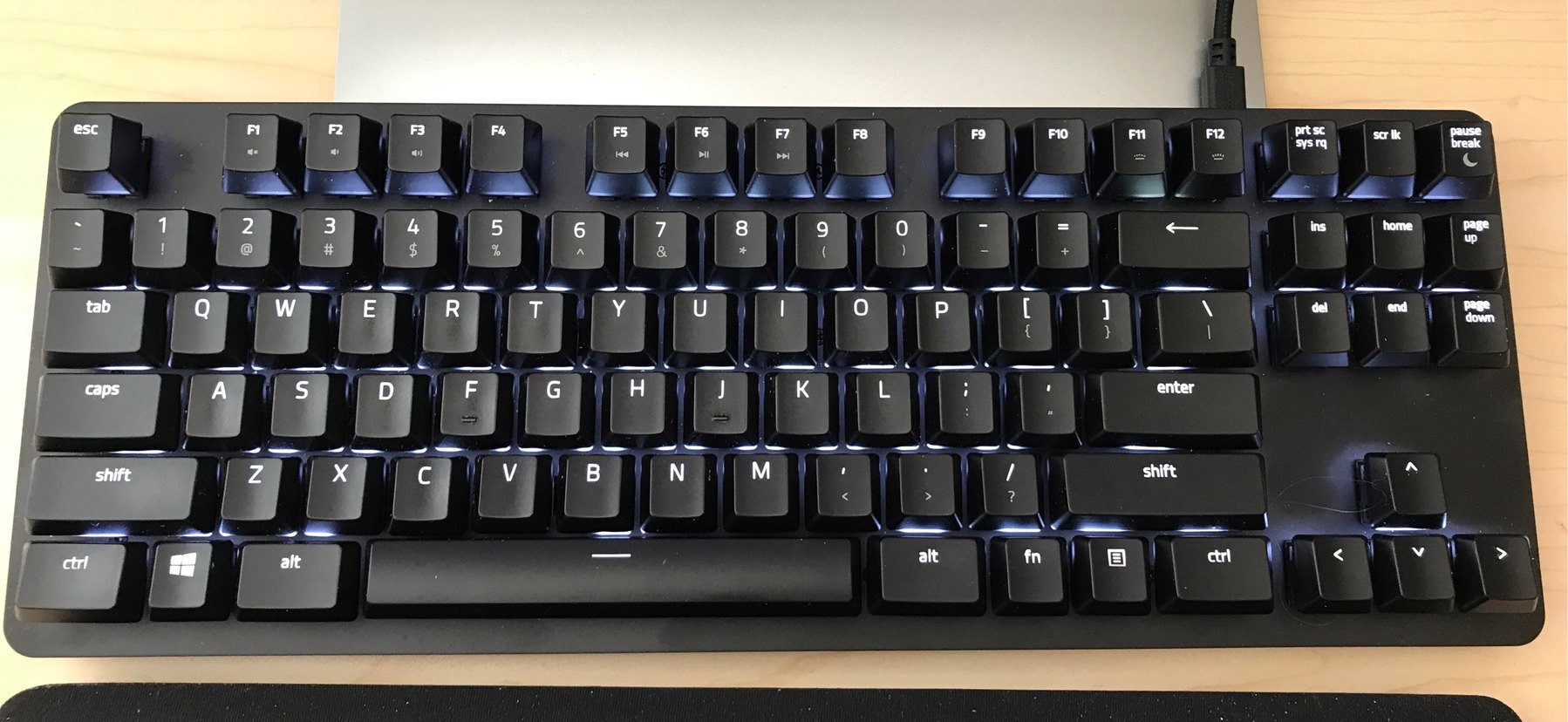We watched turtle races today at the Staten Island Zoo. It was silly and fun. The kids there got really into it. The lighting wasn’t great for photos, but we got to see a bunch of different turtles vie for the gold medal.

We watched turtle races today at the Staten Island Zoo. It was silly and fun. The kids there got really into it. The lighting wasn’t great for photos, but we got to see a bunch of different turtles vie for the gold medal.

I wrote 1,800 words for a new headphone review (it’s not complete yet, unfortunately), and submitted a small bugfix update of SwiftoDo Desktop to the App Store this evening.
I wish there was a definitive test for “is this a cold, or is it allergies?”
Apple’s new pro laptops sound fast, but until they get an entirely new keyboard design, I am out of the MacBook Pro market. My 2013 Retina MacBook Pro still works well enough for me for Swift programming and photos.
📺 “Westworld” season 3 looks fascinating. I’m excited, as always, to see where this show is going, and can’t wait to see Aaron Paul play off of Evan Rachel Wood and (hopefully) Jeffrey Wright.
I am not sure I’m interested in seeing Toy Story 4. (The final trailer dropped today.) I thought “Toy Story 3” was a great ending to the series, even though half of that movie seemed unnecessary to me.
I thought the “Game of Thrones” finale was a fitting end to the show. Like the rest of season 8, it managed to be both slow and rushed, which is quite a feat.
I am actually feeling relieved that it is over, and I don’t have to think about it anymore. That said, I will happily read the final books in A Song of Ice and Fire, when (if?) George R.R. Martin finally completed them.
I thought that iOS 12.3 made my headphone DAC/amp not work anymore. Luckily, switching to a new Lightning cable (the one that came with my AirPod 2s) made everything work again. I wish Lightning cables didn’t flake out over time.
I don’t expect to read about Micro.blog or the IndieWeb in The New Yorker, but when I do I am happy about it.
There is nothing quite like silencing 100 compiler warnings in Xcode when you think a “right click all these warnings and fix all of them the same way” command would have sufficed.
I have not watched nearly enough baseball this spring. I have followed my team, the Boston Red Sox, more closely than ever via box scores and live game update notifications, but fewer than ever based on number of minutes watching games.
I did not hate the latest “Game of Thrones” episode. I actually liked it, thought it was effective, and thought it made sense. This recap from Vulture describes the way I feel about it pretty accurately.
Of course, having browsed the web since the penultimate episode aired, I now think that I am in the minority opinion. People are so angry about what is going on in this season that I am quite taken aback. I suppose a lot of these complainers have not seen “Lost” or “Battlestar Galactica”, and have no idea how a top-tier series can really go off the rails at the end.
I think that I have been telling myself the ending will be disappointing for so long now that I am not even disappointed by whatever weaknesses and expectation shortfalls I see in it. My theory about all stories is that they are most exciting when they are beginning. Great epic stories are always beginning and beginning and beginning. The world of the story keeps expanding, as do all the life and possibilities within it. At some point, though, the story has to end, and the world built for it starts to contract. This is always disappointing. Things don’t happen that you want to happen. Narrative threads end, or simply get dropped. Questions get answered (and questions are always more interesting than answers) or, maybe, not answered. Characters don’t always develop or act in ways that you have imagined them. The author’s vision of the endgame may not align yours. When the story ends, it contracts down to a single point, and what is left may not be what you want. Even if it is, you are sad to leave your favorite characters and story ideas behind.
To sum up, there are many reasons why endings are disappointing, and there is almost nothing that can be done to help that in certain genres. “Game of Thrones” has been in this trap for a while now, and has thus far avoided the worst of all television series fates, for me at least: I still want to watch the ending and find out what happens.
I noticed an email from Google in my Spam folder this evening (copied, by someone else, here) stating that the Works with Nest API is shutting down on August 31. That’s the API that makes my Nest work with HomeKit, via the homebridge-nest plugin. It is yet another mildly upsetting thing Google is doing that involves killing a product that some people use.
I have had a Nest thermostat for years—well before Google even owned Nest. It is the only smart thermostat that I know of that will work in my house, because I do not have a common wire (which carries low-voltage power) in my heating and air conditioning system, and have no easy access to power near the Nest itself. (The Nest handles that situation just fine, but the other products I have researched, such as the Ecobee, would not.)
Overall, the Nest is OK. Its most important feature for me is that can be set via Wifi. The Nest application, however, is slow to load, buggy, and, if anything, has gotten worse over the years as Nest has added support for its other, non-thermostat products. It often forces me to log in again to my Google account (which is a multi-step process), and does not integrate with Siri or the iOS Control Center. Homebridge solved all those software limitations for me, but was dependent on this developer API that is now going away.
I hope that Google will provide a new API that I can use with Homebridge going forward, but at this point, I doubt that they will. On the plus side, I guess I can unplug the Raspberry Pi I have been running on.
I may have just done the last commit for SwiftoDo Desktop version 4.0. 🤞
After being professionally-speaking, out to sea for about a week, I am now taking a different tack. Right now I am creating a fresh C# project in Visual Studio. I’m going to write a program to automate lots of analytical reporting creation drudgery.
My FreeNAS server is back from the dead. After it stopped working and wouldn’t boot, I needed to plug in a monitor with a VGA connector (which I didn’t have yesterday) to see what was going on. It turns out that the boot drive, a USB stick, had failed.
Luckily, I have a couple other USB sticks lying around, and I had saved the FreeNAS configuration to my Mac recently. I was able to re-install FreeNAS to a new USB stick, re-upload my old configuration, and I lost no data or settings.
I think I will buy two identical USB sticks in the near future and mirror the boot drives. I would prefer this server to just run until the motherboard or power supply dies. This short period of downtime made me question whether I should even have a home server (or at least this home server), which is a question that I don’t really want to spend time thinking about right now.
The same week I wrote a blog post about how great my FreeNAS server is, it has decided to die, or at least become unreachable on the network. Of course I no longer have the VGA cable needed to hook it up to a monitor to do a reinstall. Oh, and upon further inspection, none of my monitors have a VGA input either. Hopefully there are adapters available. On the plus side, my office is so quiet now.
Now that the new trailer is out, I can conclude that the next Spider-Man movie looks delightful.
🎵 I’m listening to Aja on my V-Moda Crossfade 2 🎧 tonight. Steely Dan isn’t always my thing, but their records sound so good.
Let’s not talk about the $150-off sale on Hifiman Sundara headphones, OK?
Much to my surprise, I think I prefer the Razer Orange switches on this keyboard (pictured) to the Cherry MX Blue switches on my old one. It doesn’t hurt that the new one lights up, too. (Razer Orange switches are “silent, tactile” switches similar to Cherry MX Browns.)

I am using MarsEdit more and more for microblogging. I like it being “write-only”, as compared to using the official Micro.blog app, because it keeps me focused on getting the post done. Like lots of bloggers, I have a lot of unfinished blog post drafts lying around.
So…my new SwiftoDo Desktop app for the Mac would be 100% complete right now, if I hadn’t decided, 75% of the way through writing it, to add a secondary edit mode for the todo.txt file. That mode makes the user interface comparable to the iOS version of SwiftoDo, but is also loads better in subtle ways, such as being able to reload the file (in either mode) if an external editor (such as iCloud Drive) modifies the underlying task list file. Of course, that makes everything so much harder to implement in a bug-free way. I have been discovering and trying to fix bugs over the past week or so. I have been messing with the lowest-level code in my app far more than I would normally be doing at this stage in the game. I’m trying to finish up the version and release it soon. I will get there, but it makes me nervous to jump back into file coordination related bugs, when I thought I had perfected those features almost six months ago.
🎵 I never get sick of Lana Del Ray, especially when a song of hers shows up in my “Chill Mix”.
I think AppKit will be around for a long, long time.